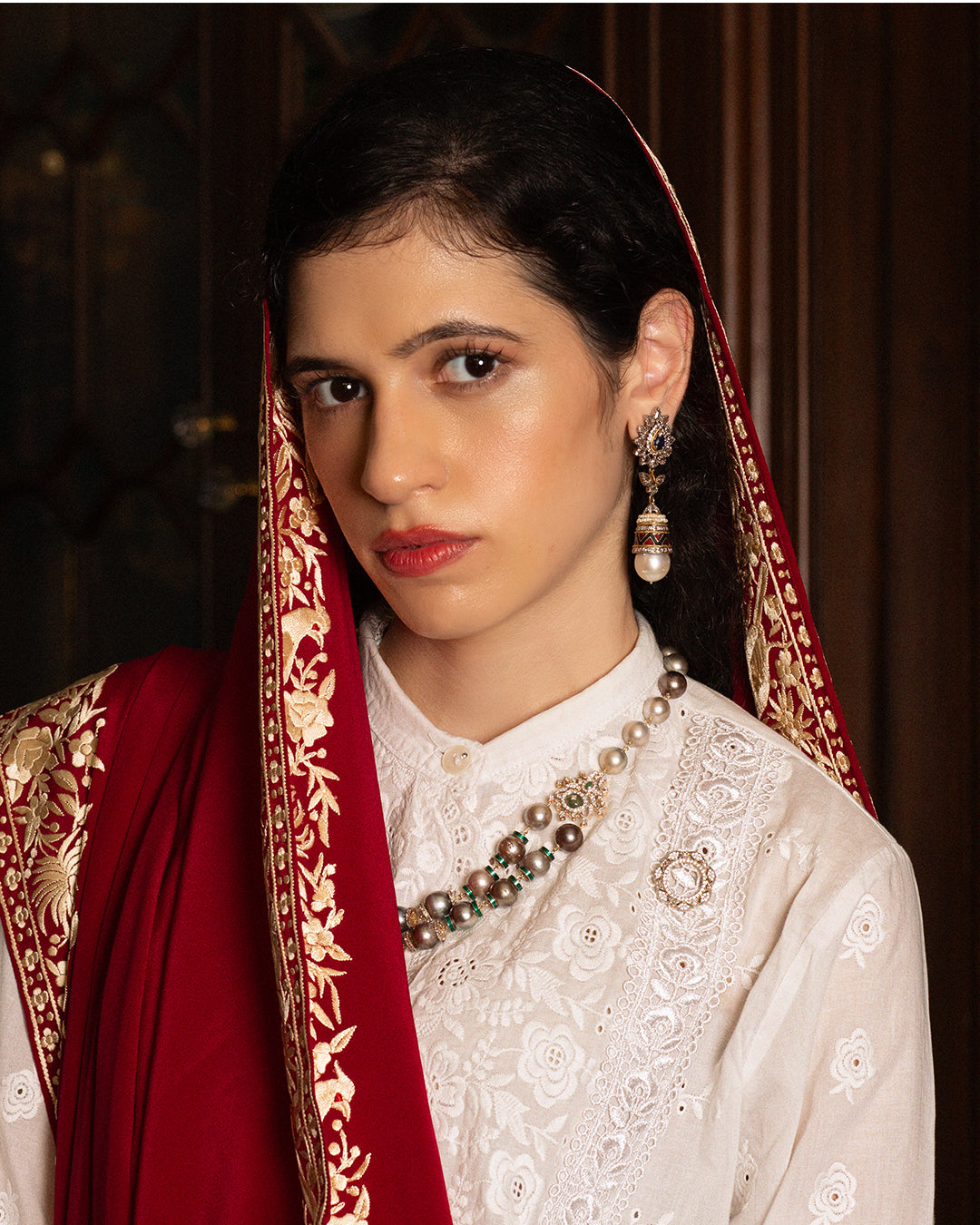In Indian culture, bangles, a type of Indian bracelet, is not just a piece of jewelry—it is considered to be an auspicious piece of bridal jewelry, a part of the Solah Shringar, and a true sign of a woman's Suhaag, or husband and their future well-being as a married couple. Being bare-handed is therefore considered inauspicious for married women.
Bangles constructed from materials including sea shells, copper, bronze, gold, agate, and chalcedony have all been discovered in the past in archaeological sites all throughout India. An artifact representing a dancing girl with bangles on her left arm was discovered at the Mohenjo-daro archaeological site in Pakistan, which dates back to 2600 BC.

Dancing girl of Mohenjo-daro
Image courtesy: Wikipedia
Copper pieces from the Mahurjhari excavations, ornamented bangle bracelets from the Mauryan Empire (322–185 BC), and gold bangle samples from the ancient city of Taxila are some other early instances of bangles in ancient India (6th century BC). Additionally, ornamented shell bangles have been discovered at numerous Mauryan sites.

A Demure Woman Tries on New Bangles, circa 1775-1800
Image courtesy: Los Angeles County Museum of Art

The Hindu Bangle-Seller, circa 1860
Image courtesy: Getty Museum Collection
Bangles are still as important today as they were thousands of years ago, despite having gotten much trendier throughout time to match a more modern appearance. They go by different names in various parts of the nation. Nevertheless, they are as important in terms of Indian wedding tradition, regardless of distance.
Significance of Wearing Bangles
The Indian bracelet is largely connected to marriage and symbolizes matrimony in a similar way to how a Western wedding ring does. Hindu brides frequently combine their gold bangles with glass bangles. Red and green glass bangles are considered to be essential signs of marriage. Green represents fertility, while red stands for life and joy. After the wedding, the woman continues to wear her bangles as a charm of safety and luck for her husband. When the husband dies, it is customary for a Hindu woman to shatter her glass bracelets to express her grief.
During the early hours of Seemantham, a Hindu tradition carried out during either of the last three months of pregnancy of a woman, a function known as Valaikappu is carried out, which literally means bangles for protection. The expectant mother is decked with a variety of bangles, including glass, silver, and gold. The neem stem bangle is the first to be worn. Valaikappu can also be performed separately, however, it's typically done before Seemantham these days for convenience.
Other Types of Bridal Indian Bracelets

Image courtesy: WittyVows via Pinterest
Bangles and other forms of hand jewelry form an important part of the auspicious Solah Shringar, or the 16 adornments that a bride has to don on the day of her wedding. Below are some of the different types of Indian bracelets and other hand jewelry that a bride adorns as part of her bridal jewelry:
Kada/Kangan
Indian men and women both wear metal bracelets called kadas. Sikhs typically wear it for religious reasons. Indian women dress in kangan as jewelry. It is a stiff gold or silver bracelet that sometimes has stones set into it. Indian moms typically give it to their daughter-in-law as a symbol of the family's prosperity and growth.

Image courtesy: The Met Museum

Image courtesy: The Met Museum

Image courtesy: The Met Museum
Kadas could be lac-filled, solid, or hollow. The ends of the kada feature incredible, diverse motifs inspired by nature, such as two parrots, twin elephants, flowers, etc. Indian hand accessories have a lot to offer, from diamond-studded bangles to brass bracelets to stone-set Kadas, adding more beauty to any look.
Haath Phool
A royal favorite, the hath phool (flowers for the hand) is is an Indian bracelet encrusted with gemstones and has jewel-set chains culminating in a flower at the back of the palm and similar chains leading to the five rings on the fingers and thumb, each of which has a different floral motif. It is also known as the Panchangala (jewel for the five fingers). The hath phool adds to the beauty of the bride's hands, which are already decorated with mehendi and other bridal hand jewelry.

Image courtesy: Wikimedia Commons

Rafat Zamani Begum wearing a pearl Haath Phool
Image courtesy: Massimo Terzo Account via Pinterest
How to Wear the Different Hand Bracelets
The wrist jewelry should be of a size that is neither too loose nor too tight that it falls out of your hand when you move.
Kangans can be worn alone or, more traditionally, on the two outer corners of a bangle set to frame it. Kangans are broader in design than bangles. Since kangans/kadas are heavier and more elaborate, they are fastened securely with a clasp or screw.
The Hathphool bracelet should be put on first, then the rings on all or some of the fingers.




















